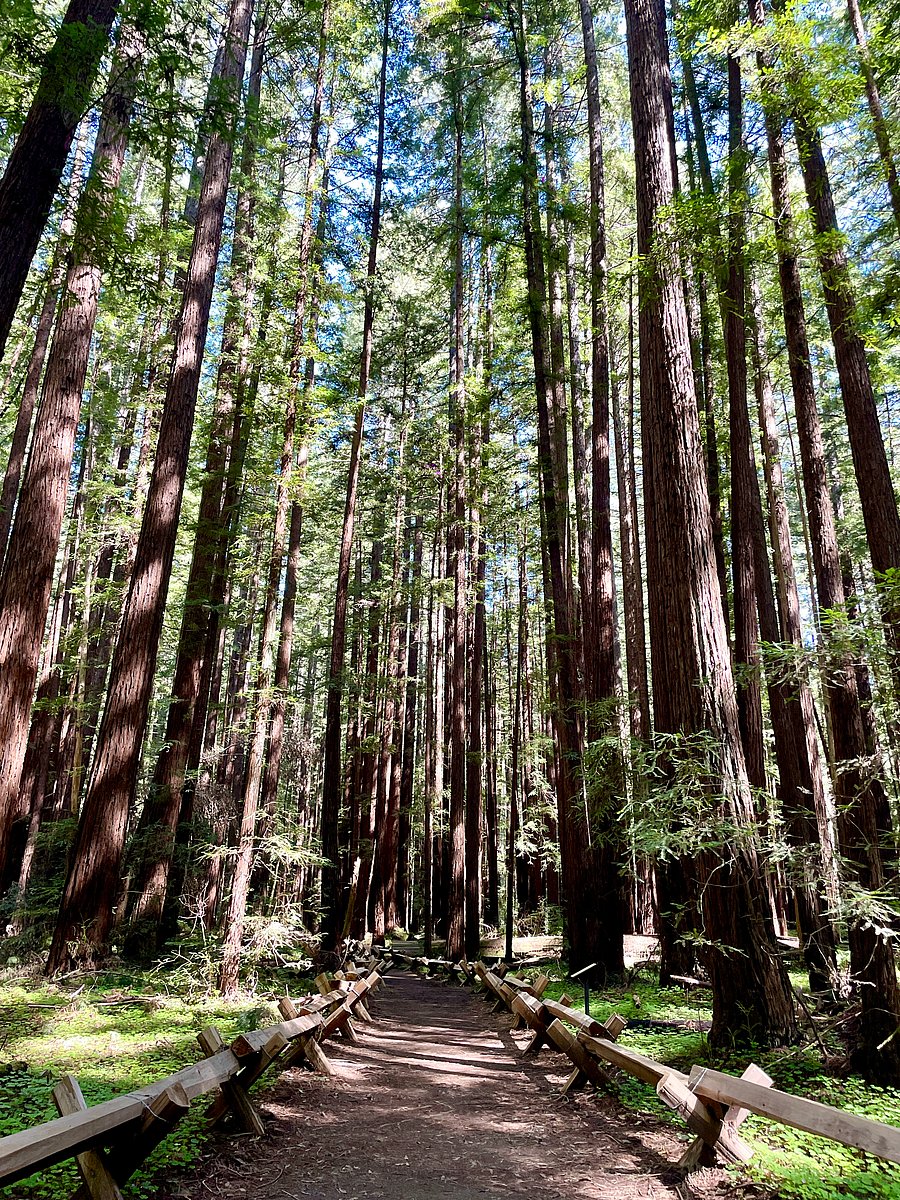
The Armstrong Redwoods State Natural Reserve in Sonoma County, California.
Credit: Pallavi Parischa
When you think of wine in California, Napa Valley comes to mind. But just 48 kilometres north of San Francisco lies Sonoma Valley, a sprawling wine-growing region twice the size of Napa. It is home to more than 425 vineyards, thick redwood forests, and spectacular views of the Pacific Ocean coastline.
Towering trees
It is hard to spot the crowns of the redwoods that soar into the sky at the Armstrong Redwoods State Natural Reserve in Sonoma County. Among these trees, some of the world’s tallest, lies a board that says ‘While you’re here, slow down. Absorb the stillness and consider the time it has taken this forest to reach its prime.’ I smile, put my phone away and soak in the serenity.
My guide takes me on the Pioneer Nature Trail that’s 0.75 miles (1.2 km) long and also wheelchair accessible. He explains that these trees, which can be as tall as 300 feet, are among the oldest surviving trees — the average life span being 500 to 700 years. The oldest one here, named Colonel Armstrong is estimated to go back an awe-inspiring 14 centuries. I hug some trees and breathe in the fresh air. What catches my attention is an amphitheatre in the forest with wooden benches and a stage where performances are held. The Redwood Forest Theatre is surely the stuff of dreams for both music and nature lovers.
Ocean views
Winding past the blue ocean, farms, small villages and towns, the drive along the spectacular Pacific Coast in Sonoma comes with bragging rights. Bodega Bay, a picturesque fishing village with camping sites and inviting highway eateries, is a popular stop. Expect the freshest seafood — oysters, prawns, clams and mussels — caught just a few hours earlier and served in dishes like fish tacos. It’s like tasting the ocean in your mouth. Those who like sampling local food should not skip the clam chowder, a thick, creamy soup made with clams, milk, potatoes, and onions served in hollow sourdough bread. Sit next to the ocean and wash it all down with a local beer.
A rocky cliff overlooking the ocean, Bodega Head, is yet another jaw-dropping scenic spot. With the wind in your hair, just stroll around, gaze at the sunrise or disappear into the ocean and relax in camping chairs to watch the waves crash into the shore.
There are a few hiking trails around — the easy one is just 1.6 kilometres long while the longer one is about 4.8 kilometres. From December till May, it is also a great place for whale watching, when these aquatic creatures migrate from Alaska into the warmer waters to breed — sometimes they can be spotted within just a few hundred yards of the coast.
California wine’s birthplace
Not many know that Sonoma was the birthplace of California’s wine industry — it all began in 1823 when Franciscan missionaries planted the first grapes along the valleys. That is why it is home to the oldest winery in the state, Buena Vista Winery, which dates back to 1857. With no refrigeration at that time, they created an underground cave to keep the bottles cool and were the first to use redwood barrels to age the wine. A tasting session at the renovated Champagne Cellars, which were made in the 1860s, evokes a sense of history. They make all types of wines — Pinot Noir, Chardonnay, Cabernet Sauvignon, and sparkling wine.
With so many vineyards sprawling along its valleys, it may be confusing to choose one. Paradise Ridge Winery in Santa Rosa, a picturesque winery overlooking the Russian River Valley, is unusual — it is known not just for its wines but also for its art installations. Apart from indulging in a leisurely wine-tasting session and a vineyard tour, take a walk to see the impressive sculptures that dot the landscape.
One of them is an iconic 12-foot-tall LOVE steel sculpture that became a symbol of hope after it survived the devastating wildfires that ravaged many wineries in 2017, including Paradise Ridge, which was then rebuilt. This winery is known for Chardonnay, Syrah and Sauvignon Blanc. A tasting of four different kinds of wine starts at 35 dollars.
If you happen to visit Sonoma in September, grape harvesting will be in full swing, allowing getting a hands-on experience of the first step of winemaking. It’s not all about wines, however, — Sonoma also makes craft beer and cider.
A great place to taste these is the lively Barlow Market in Sebastopol that’s got more breweries, restaurants and wine-tasting rooms than shops. Golden State Cider, Crooked Goat Brewing and Woodfour Brewing Company are popular options for trying local beer and cider.
Sunshine, ocean views, and forests — Sonoma’s scenic breadth, along with its wine offerings and slow, laid-back pace, have put it on the map.